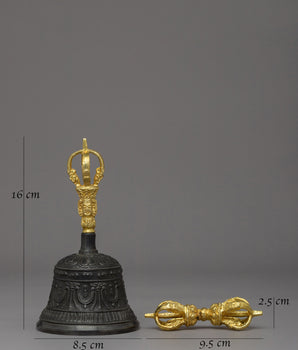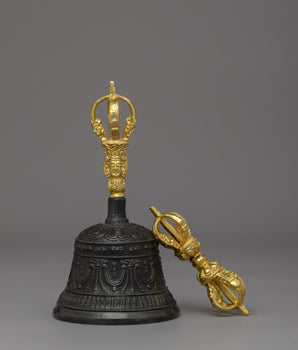Introduction to the Eight Auspicious Symbols of Buddhism, Ashtamangala
There are eight auspicious symbols in Buddhism, also known as “the eight symbols of good fortune in Buddhism,” underlining the importance of achieving enlightenment through various teachings of Buddha.
The Eight Auspicious Symbols are:
1. The Parasol
2. Lotus Flower
3. Conch Shell
4. The Endless Knot
5. The Golden Fish
6. The Vase
7. The Victory Banner
8. The Eight Spoked Wheel, Also Known As The Dharma Wheel
But why are they called “the auspicious” symbols of Buddhism?
Eight Auspicious derives from the Sanskrit word “Ashtamangala,” which has stood throughout history. These auspicious symbols were also a part of faiths such as Hinduism and Jainism. They did not just belong to Buddhism, and the eight auspicious symbols changed depending on the historical period or culture.
Origin of Symbolism in Tibetan Buddhism
While initially, these symbols represented the offerings made to Buddha (Shakyamuni) by Hindu deities/gods for achieving enlightenment, they were associated with various meanings over time. Today, several other concepts represent different stages of a person’s material and spiritual well-being.
View Eight Auspicious Symbols from our collection
An Overview of the Eight Auspicious Symbols:
The parasol

The parasol is primarily a symbol of protection. The parasol also represents enlightenment and prosperity. The symbol is also associated with enlightenment, and the protection of the wisdom gained on the path to enlightenment.
The Lotus

The Lotus Flower is one of Buddhism's most widely recognized symbols, primarily representing peace and the achievement of enlightenment, and the ability to think straight and pure. The mud represents evil, worldly pleasures such as attachment and desire. It represents the dark underside of the beautiful flower. In a sense, the symbol shows that the lotus flower has a dark side in all its beauty and glory.
The Conch Shell

The right-turning conch shell depicts the Buddha’s melodious voice, and the color white represents his enlightenment and divinity, his fearlessness in teaching the truth of the Dharma. It also doubles as a symbol of power and as a symbol of protection. Right-turning conch shells are rare, which is why they are considered sacred items and symbols.
The Endless Knot

In traditional Buddhism, as a representation of Buddha’s teaching, it signifies wisdom, compassion, continuity of life, and the perfection of knowledge. It illustrates how everything in the world is connected, and to attain enlightenment, one must practically apply gained wisdom and knowledge to every aspect of their life.
Two Golden Fishes

In Buddhism, the two golden fishes describe the freedom of will, the realization of which is an essential aspect of Buddhism. The Buddha taught that one must not follow blind faith but must make conscious decisions regarding their life. The fish also represent freedom of movement, happiness, and fertility. In most depictions, the fish drawn as carp are considered sacred for their magnificent size and long lives. Thus, the fish symbol also represents abundance and longevity.
The Vase

The Vase symbolizes the wealth of Buddha’s teachings. The treasure vase contains precious and sacred things. It is always overflowing with wealth. The idea is to show that one can achieve never-ending wisdom, knowledge, happiness, peace, and power.
The Banner of Victory

In Buddhism, the victory banner represents Buddha’s victory over all hindrances on the path to achieving enlightenment. Today, the banner represents how one can overcome all hurdles to achieve enlightenment, happiness, success, power, attainment of wisdom, and other concepts.
The Dharma Wheel or Dharmachakra
The Eight-spoked wheel or the Dharma wheel represents the eight-fold path to achieving enlightenment as laid down by the Buddha, helping you guide your vessel in the right direction. The Dharma wheel comprises three main components; the spokes, the center, and the rim. The center represents ethics, stabilizing the mind, and achieving purity in the mind. The rim represents meditation and concentration that help harmonize the mind and the body, aiding in following the eight-fold path that the spokes represent.

The eight spokes of the Dharma Wheel represent:
● the right kind of view
● the right way of thinking
● the right kind of speech
● the right kind of action
● the right kind of livelihood
● the right way of diligence
● the right form of mindfulness
● the right way of concentration.
The Dharma Wheel is the last of the eight auspicious symbols in the Buddhist faith and represents the final enlightenment stage.















